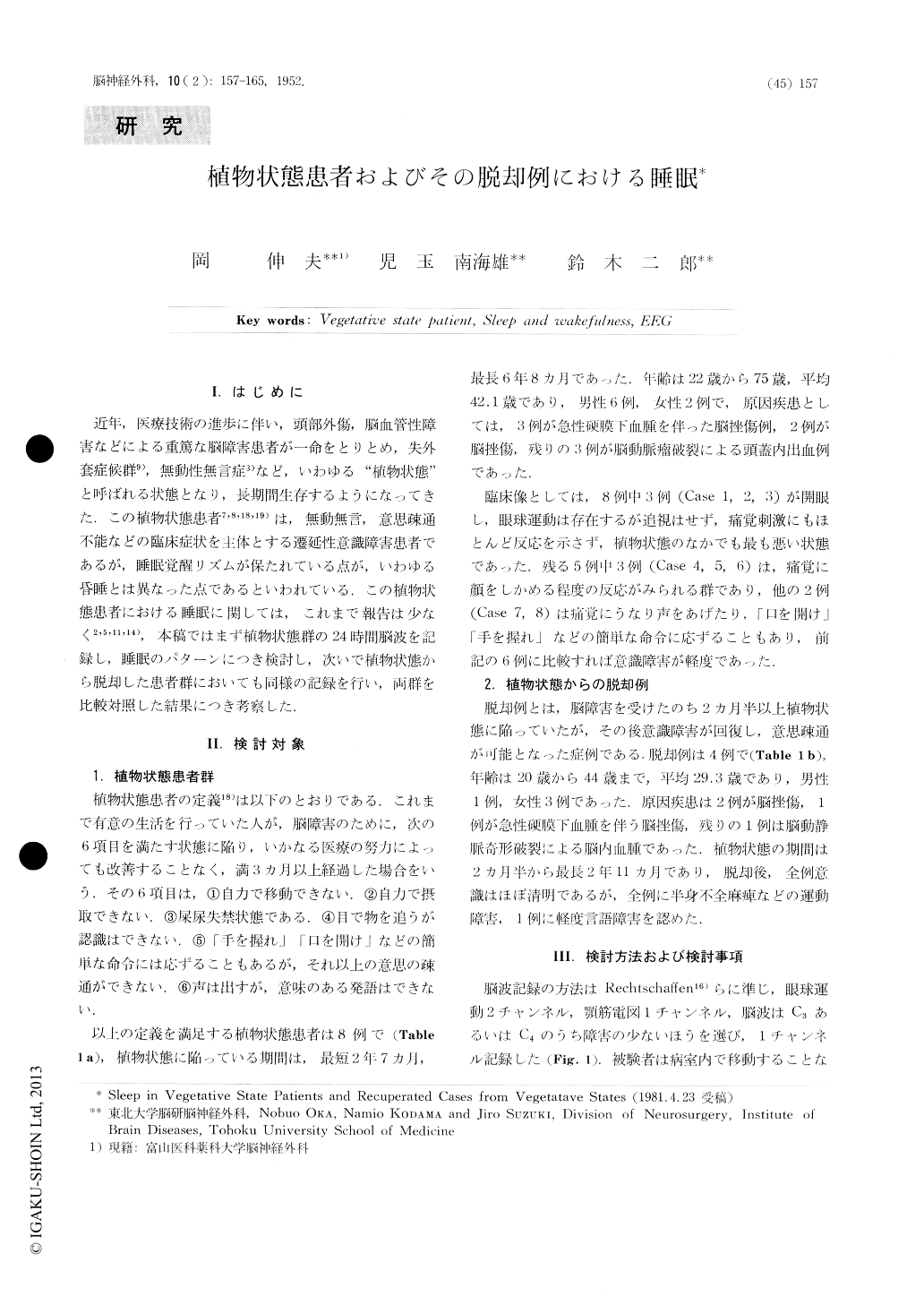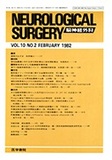Japanese
English
- 有料閲覧
- Abstract 文献概要
- 1ページ目 Look Inside
I.はじめに
近年,医療技術の進歩に伴い,頭部外傷,脳血管性障害などによる重篤な脳障害患者が一命をとりとめ,失外套症候群9),無動性無言症3)など,いわゆる"植物状態"と呼ばれる状態となり,長期間生存するようになってきた.この植物状態患者7,8,18,19)は,無動無言,意思疎通不能などの臨床症状を主体とする遷延性意識障害患者であるが,睡眠覚醒リズムが保たれている点が,いわゆる昏睡とは異なった点であるといわれている.この植物状態患者における睡眠に関しては,これまで報告は少なく2,5,11,14),本稿ではまず植物状態群の24時間脳波を記録し,睡眠のパターンにつき検討し,次いで植物状態から脱却した患者群においても同様の記録を行い,両群を比較対照した結果につき考察した.
Twenty-four hours polygraphic recording of EEG,electrooculogram and EMG were performed on 8 vegetativestate patients and 4 recuperated cases, and the differencesof the sleep pattern between two groups were discussed.
It was difficult to divide the sleep pattern into normalfour stages, because the frequency of EEG in vegetativestate patients were very slow. So we divided it into thefollowing 4 patterns; awake, shallow sleep, deep sleep andREM sleep.
The sleep in vegetaive state patients was interrupted byshort duration and appeared at random during day andnight.

Copyright © 1982, Igaku-Shoin Ltd. All rights reserved.


